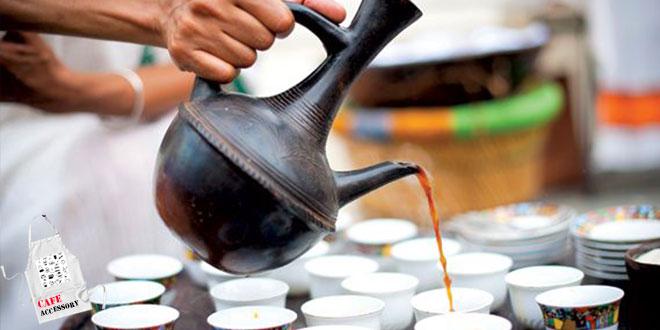کافه اکسسوری – اتیوپی Ethiopia اغلب بهدرستی بهعنوان زادگاه قهوه معرفی میشود. ازنظر فنی، اختلافنظر در مورد اینکه واقعاً گونه عربیکا از کجا منشأ گرفته است، وجود دارد. اتیوپی و یمن دو رقبای داغ در این میان هستند، اما اتیوپی است که محل استقبال بینظیرترین و متنوعترین آرایه طبیعی گونههای عربیکا است.
ارتفاعات اتیوپی زیستگاه کاملی را برای شکوفایی عربیکا ارائه میدهد؛ بهاندازهای که این مناطق مرتفع تقریباً در همه جهان تنوع گونههای عربیکا را در خود جایداده است. به همین دلیل، اتیوپی پتانسیل تولید طیف گستردهای از مشخصات و پروفایلهای طعمی را دارد.
بیشتر قهوه در اتیوپی در موقعیتهایی مانند مزرعه معمولی در قاره آمریکا رشد نمیکند. درعوض، قهوه با همکاری بسیاری از کشاورزان خرد، با هم مخلوط و در یک کارخانه مرکزی پردازش میشوند. دستیابی به قابلیت ردیابی در این شرایط طبیعتاً دشوارتر است.
بااینحال، تعداد زیادی از قطعهها در زمانهای مختلف از کارخانههای فرآوری عبور میکنند، بنابراین هر نوع قهوه بستگی به این دارد که قسمتهای تعاونی در هر زمان خاص برداشت میکنند. قهوههای شسته شده از منطقه یورگاچف با نتهای چای و مرکبات مانند میتوانند بهشدت گلی و معطر باشند. یک قهوه شسته شده اتیوپی غربی میتواند از گل و لعاب بیشتری برخوردار باشد. در مقابل، قهوه طبیعی سیدامو و هرار میتواند جسورانه، شکلاتی و پر از میوههای رسیده باشد.
منبع: The Coffee Dictionary, Maxwell Colonna
Ethiopia
Ethiopia is often rightly heralded as the birthplace of coffee. Technically, there is dispute as to where Arabica really originates. Ethiopia and Yemen are the two hot contenders, but it is Ethiopia that is home to the most incredibly diverse natural array of Arabica varieties. The Ethiopian Highlands offer the perfect habitat for Arabica to flourish.
So much so that these highlands house nearly all of the world’s diversity of Arabica varieties. Due to this, Ethiopia has the potential to produce a wide range of characteristics and flavour profiles. Most coffee in Ethiopia is not grown in the farm-like situations typical of the Americas. Instead, the coffee is cooperatively grown. Many smallholders, sometimes hundreds, will mix their small lots together and deposit them at a central processing mill.
It is naturally more difficult to achieve traceability under these circumstances. You may buy a coffee from a mill in Ethiopia and then buy what appears to be the same coffee. However, different lots pass through the mill at different times, so any coffee will be dependent upon which parts of the cooperative are harvesting at any particular time.
Washed coffees from the Yirgacheffe region can be intensely floral and aromatic with tea- and citrus-like notes. A western Ethiopian washed coffee can be more densely floral and fuller bodied. In stark contrast, natural coffee from Sidamo and Harar can be bold, chocolaty, and chock-full of ripe fruit
کافه اکسسوری را در اینستاگرام نیز دنبال کنید.




